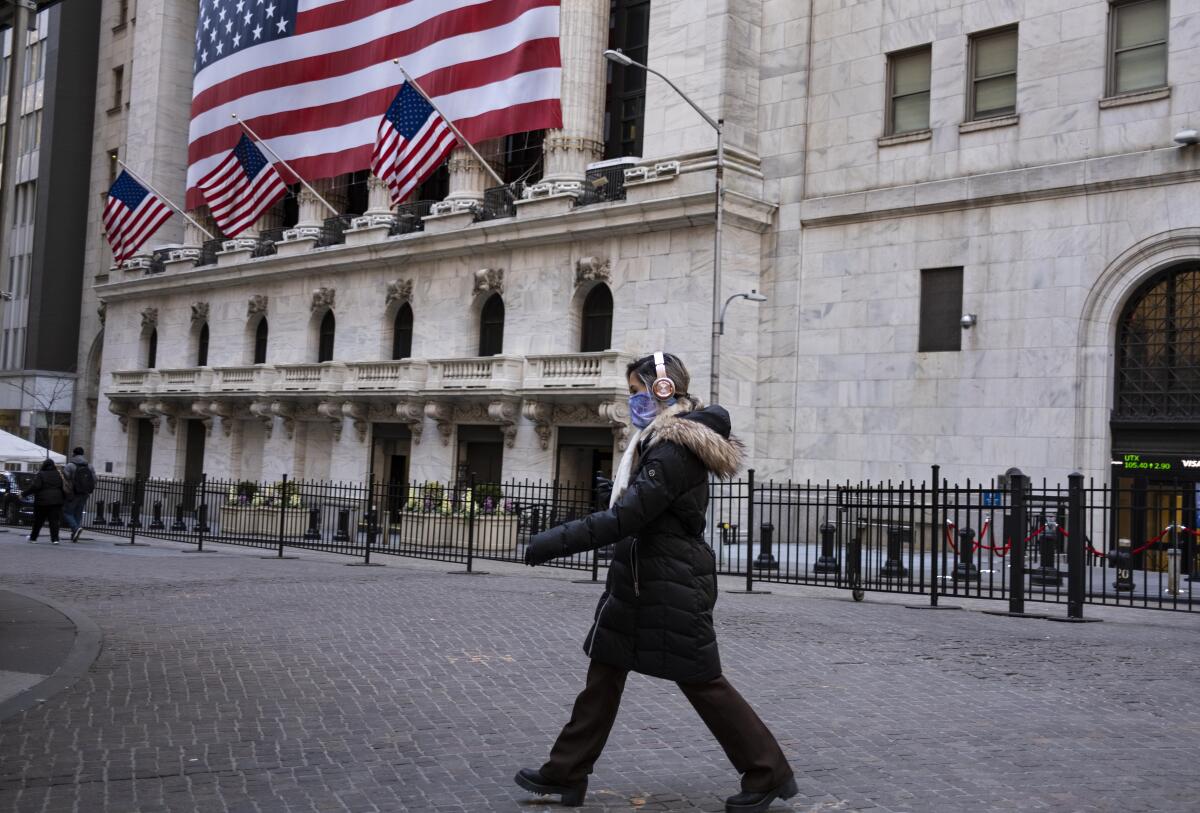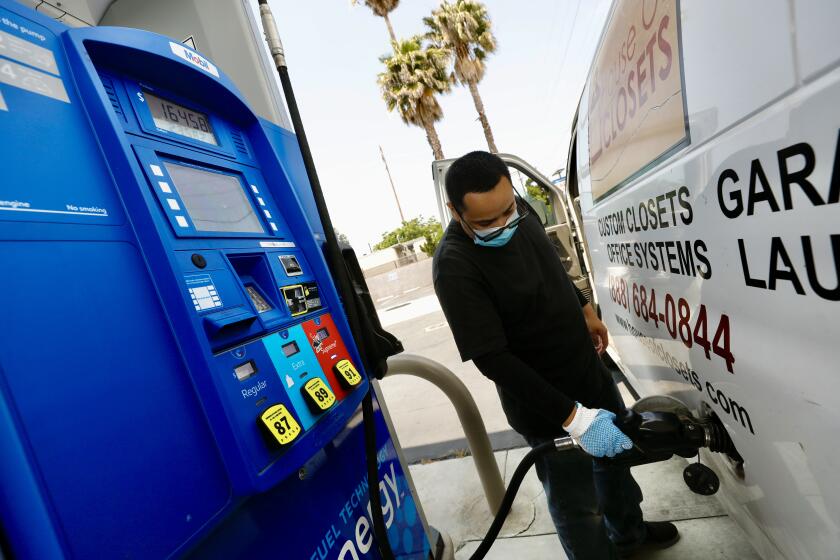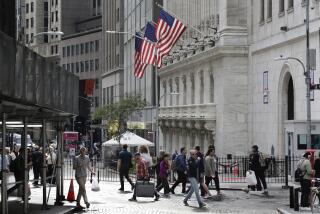Stocks end mixed as jump in oil prices fans inflation fears

- Share via
Stock markets around the world were mixed Monday, as a jump in oil prices threatens to add upward pressure on inflation.
The Standard & Poor’s 500 index gained 15.20 points, or 0.4%, to 4,124.51, though more stocks in the index fell than rose. The Dow Jones industrial average climbed 327.00 points, or 1%, to 33,601.15, while the Nasdaq composite fell 32.45 points, or 0.3%, to 12,189.45.
Oil jumped 6.3% after Saudi Arabia and other crude-producing countries said over the weekend that they would cut production. That lifted stocks of energy companies, including a 5.9% rise for Exxon Mobil, a 9.9% leap for Marathon Oil and a 4.3% gain for BP.
Although oil’s jump helps energy producers, it also weighs on much of the rest of the market. Beyond raising gasoline prices and other costs for everyone, it also dents one of the main themes that helped stocks rise in this year’s just completed first quarter: that turmoil in the banking system and a continued slowdown in inflation could push the Federal Reserve to ease its hikes to interest rates.
The Fed has jacked rates up at a feverish pace over the last year in hopes of undercutting high inflation. Higher rates can do that by slowing the economy, but they risk causing a recession later on.
They also drag down prices for stocks, bonds and other investments. That’s a factor that helped cause the second-largest U.S. bank failure in history last month, which in turn meant harsher scrutiny on the strength of banks worldwide. The fear is that the banking industry’s troubles could lead to a pullback in lending to all kinds of companies, which would further hurt the economy.
Mixed signals — including layoffs, strong job growth and lingering inflation — have clouded the U.S. economic outlook.
Hope on Wall Street has been rising that the Fed may already be done raising rates and that cuts to rates could even happen later this year. Such cuts would release some of the pressure on the economy, which is still growing thanks to a strong job market but has shown pain in the housing market and other corners.
Cuts to rates also tend to act like steroids for financial markets. U.S. stocks have tended to return an average of 8% in the three months following the peak of the Fed’s federal funds rate, according to Goldman Sachs. That includes six instances dating to 1982.
That’s why so much furor has been built among traders as they bet on how much further the Fed will raise rates. On Friday, they were leaning slightly toward the Fed holding steady at their next meeting in May, which would be the first time in more than a year that it didn’t hike rates.
But following Monday’s leap for oil prices, some are betting that that the Fed may hike rates by another quarter of a percentage point in May, according to CME Group.
Gas prices in Los Angeles County have been on the upswing since late December, reaching $4.56 on Monday. Prices at the pump have been rising across the nation.
Short-term Treasury yields initially rose on such expectations, but they eased following the release of a disappointing report on the U.S. economy. It showed manufacturing activity in the U.S. weakened last month by more than economists expected.
March marked its fifth straight month of contraction and showed the biting effects of past rate hikes are already working through the system. Following that report, the two-year Treasury yield fell to 3.97% from 4.04% late Friday. It had been above 4.11% earlier in the morning.
It got its initial push higher from the rally for oil prices. A barrel of U.S. crude oil jumped $4.75 to settle at $80.42 after oil producers said over the weekend that they would cut production from May until the end of the year.
Less supply of oil would raise its price, as long as demand stays steady.
Brent crude, the international standard, rose 5.04% to $84.93 per barrel. It’s roughly back to where it was a month ago, though it’s still well below where it was in March 2022, when it topped $130 per barrel after Russia’s invasion of Ukraine raised worries about energy supplies.
“This will create both political waves across Europe and even higher general inflation in the USA, leading to renewed pressure on the Federal Reserve to keep hiking rates aggressively,” Clifford Bennett, chief economist at ACY Securities, said in a report.
Higher interest rates hit all kinds of stocks, but they tend to hit high-growth companies the hardest. That puts extra pressure on the Big Tech stocks that already have an outsized effect on the S&P 500 and other indexes because of their immense size.
In the first quarter, hopes for easier interest rates meant Big Tech stocks were among the main reasons for a gain in the S&P 500. Strategists at Morgan Stanley led by Michael Wilson are skeptical that they’ll continue to hold up better than others when the market is still under downward pressure, as they expect.
“We see little evidence that a new bull market has begun and believe the bear still has unfinished business,” Wilson wrote in a report.
Amazon was one of the heaviest weights on the index Monday after it slipped 0.9%.
Tesla fell 6.1% after it said over the weekend that its deliveries in the first three months of the year fell short of analysts’ expectations, even though it still set a record.
In markets abroad, stock indexes were mixed across Europe and Asia.
AP writer Elaine Kurtenbach contributed to this report.
More to Read
Inside the business of entertainment
The Wide Shot brings you news, analysis and insights on everything from streaming wars to production — and what it all means for the future.
You may occasionally receive promotional content from the Los Angeles Times.












